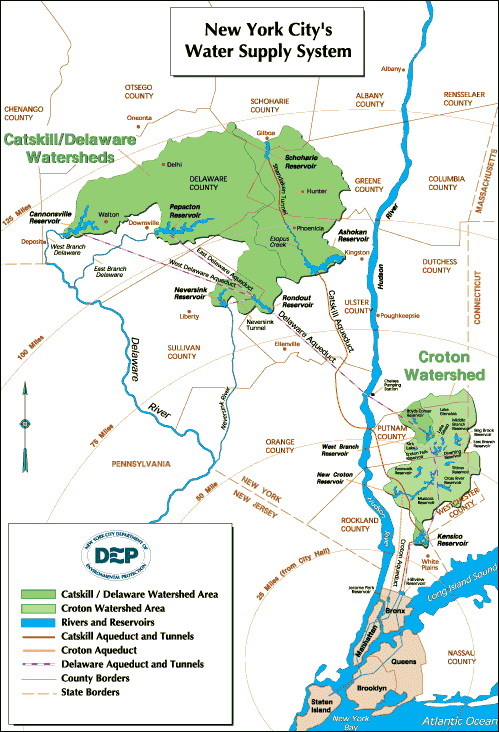Each day, more than 1.1 billion gallons of fresh, clean water is delivered from large upstate reservoirs – some more than 125 miles from the City – to the taps of nine million customers throughout New York state.
The watersheds of the three systems cover an area of almost 2,000 square miles, approximately the size of the state of Delaware. The reservoirs combined have a storage capacity of 550 billion gallons. The water flows to New York City through aqueducts, and 97 percent reaches homes and businesses through gravity alone; only 3 percent must be pumped to its final destination. Chlorine is added to the water to kill bacteria, and fluoride is added to help prevent tooth decay.
The Croton System
Located in Westchester, Putnam, and Dutchess Counties, the Croton system has 12 reservoirs and three controlled lakes. The largest, the New Croton Reservoir, can hold 19 billion gallons of water. The system normally supplies 10 percent of the City's drinking water, but can supply more when there is a drought in the watersheds farther upstate.
The Catskill System
The Catskill system includes two reservoirs and supplies up to 40 percent of the City's daily needs. The Catskill watershed is located in parts of Greene, Ulster, and Schoharie Counties, about 100 miles north of New York City and 35 miles west of the Hudson River.
The Delaware System
The Delaware system, in parts of Delaware, Ulster, and Sullivan Counties southwest of the Catskill watershed, includes four reservoirs which provide 50 percent of the City's daily water needs. The largest is the Pepacton, which can hold over 140 billion gallons of water — more than the entire capacity of the Croton system.
The New York Water Supply System



